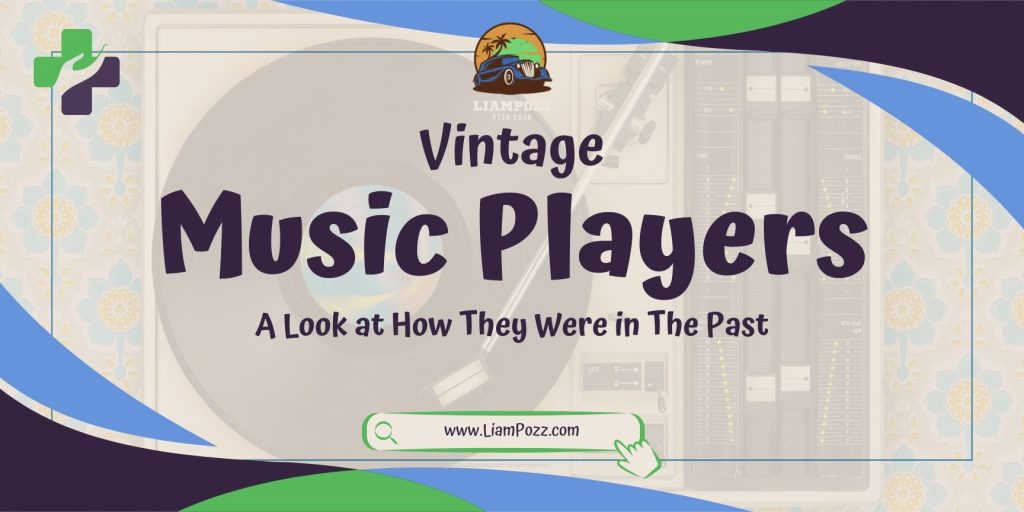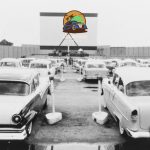Music is one of the things that shape our culture. Music players are therefore one of the most important technological gadgets for many of us, whatever genre it may be, we always want to hear our favorite music through our own gadgets. But, have you ever wondered what people used to consider as their iPods?
Today, we want to get our hands on the newest headphones and devices mass-produced by leading companies where we can play our tunes, in the olden days, people could only use whatever technology was available, which in comparison to us now, we have a vast selection of gadgets available for our perusal whenever and wherever we want to hear our music, take a look at the inventions that were considered trendy before and its evolution throughout the years.
Victrola

In 1877, this phonograph was created by the Victor Machine Talking Company, which looked more like furniture than a sound machine, the Victrola had the capacity to record and make sounds or music which people could hear throughout the house, it was a staple for every household to have one of these music players.
Later, it became a best-seller upon its introduction in 1906 with the company creating a variety of designs, including different cabinet sizes, its lowest price is at $15 to a whopping $600 for fine wood and gold-trimmed cabinets.
Table Radios

There was a need for smaller music players instead of large gramophones that were used at home, with this, the rise of table radios came in the 1900s as they were used as the primary source of music.
Older designs required the listener to tune in to the different stations available. More updated versions included cassette players and even compact disks, this became a more suitable option for people because of its size and its use of batteries.
Turntables

In the 1960s and 1970s, turntables re-emerged in the scene of music players because of the release of newer designs, a feature that made it a best-seller once more was the stereo playback of the Hi-fi sounds of the turntable.
Because of its nostalgic feature of the use of physical vinyl records, companies started making automatic turntables, this sound system later became more interesting once more and brought back in the modern setting with more advanced features like USB ports, Bluetooth connection to devices, and even a connection to your Spotify playlists.
8-Track Tape Music Players

In the 1970s, 8-track tape players were one of the must-haves of that period, most of these have a place where you can connect them to speakers while others also include turntables, radio dials for FM/AM channels, and cassette players.
8-track cartridges could also be placed into cars since vehicles then included a radio where you can insert these tapes, these cartridges had four stereo tracks inside that were on a one-fourth-inch loop on the tape, giving you 8 parallel tracks.
Boom Box

With the emergence of the boom box in the 80s to the 90s, this hippie trend became popular instantly, especially on the streets, this massive player was a portable radio and cassette player in one while having the capacity to play sounds through two loudspeakers and a sound amplifier.
The sound of these systems is dependent on its size; thus, the larger they were, the louder the sounds that could be heard, media nowadays use boom boxes as references to the hip-hop culture.
Towards the 90s, multiple updates were made to the boom box which included CD players, equalizers, and a second tape deck for recording the radio and other forms of audio.
Walkman
The appearance of the Walkman shaped the generation of the late ‘70s to early ‘80s. This was largely because of its portability to bring wherever you go, the Walkman is a cassette tape player that could be connected to headphones for listening, which poses the reason why they were labeled as personal stereos to the masses.
Companies who created these devices received backlash because of its ability to prohibit natural conversation and to pose as a distraction, especially the youth, despite this, Walkmans instantly became a hit to all ages then, this served as an inspiration to later devices like iPods and many more to come.
How Did People Listen To Music In The Past?
Music has been a part of human culture for centuries. People have used music to express themselves, communicate, and entertain themselves for thousands of years. How did people listen to music before the invention of the radio, CD player, or MP3 player? The first musical instruments were made out of natural materials like bones, shells, and stones. These instruments were used to create simple rhythms and melodies. Later, people began to create instruments out of metal and wood. Eventually, people invented ways to make recordings of music.
Before the invention of the radio, people listened to music by going to concerts or listening to live performances. They also listened to music on the radio. The first radios were made out of metal and wood. They had large antennas that people would use to pick up the signal. Later, radios were made out of plastic and were smaller in size. Before the invention of the CD player, people listened to music by going to concerts or listening to live radio broadcasts. With the invention of the CD, people could buy music and listen to it at home. CD players became very popular, and soon almost everyone had one.
In the early days of the CD player, there were no digital audio players or smartphones. People would listen to CDs on their CD players, and that was it. However, over time people started using their CD players to play other things, such as movies and video games.
One of the most popular things to play on a CD player is movies. People would put a movie in their CD player and watch it. This was especially popular in the early days of the CD player, before digital audio players and smartphones were popular. Another thing people used to do with their CD players was play video games. This was popular in the early days of the CD player, before digital audio players and smartphones were popular.
However, as digital audio players and smartphones became more popular, people started using them to store and playback their music collections. This, in turn, led to a decline in CD sales. Now, with the advent of streaming services such as Spotify and Apple Music, people are streaming their music instead of buying it. This has led to a decline in CD sales of about 20% per year. As a result, many record stores have had to close down, and the CD industry is in decline.
What Was The Music Player In The Past?
In the past, the music player was a physical object that people used to listen to music. It was a box-like device that people would put on their desks or in their homes. The music player would have a cassette player or a CD player, and people would use it to listen to their favorite songs. However, with the advent of the internet and digital music, the music player has become obsolete. Now, people can listen to their favorite songs online, without having to use a physical object. This is because there are now many different websites and apps that allow people to listen to music for free.
Some of the most popular websites and apps for listening to music are Spotify, Apple Music, and YouTube. These websites and apps allow people to listen to a wide variety of songs, without having to pay anything. They also allow people to create playlists of their favorite songs, and to listen to music offline.
As a result, the music player is one of the most popular applications on the iPhone. The iPhone’s music player has many features that set it apart from other music players. It allows users to create their own playlists, and to add songs to those playlists. It also allows people to listen to their music offline, which is a great feature for people who have a limited data plan.
How People Listened To Music Throughout The Years?
From the phonograph to the iPod, people have always found a way to listen to their favorite music. While the technology has changed over the years, the need to listen to music has remained the same.
The first device that people used to listen to music was the phonograph. This device was invented by Thomas Edison in 1877. The phonograph was a large machine that people had to sit down in front of. It had a large horn that they would put their ear up to in order to listen to the music.
In the 1920s, the radio was invented. This allowed people to listen to music in their homes without having to sit down in front of a machine. The radio also allowed them to listen to news and other programs. In the 1960s, the Beatles introduced the world to the concept of the music video. This allowed people to see their favorite musicians perform their songs. In the 1980s, the Walkman was invented.
How Did People Listen To Music In 1998?
1998 was a year that would see the emergence of a new way to listen to music- the MP3 player. While cassette tapes and CDs were still popular ways to listen to music, the MP3 player would allow people to store their music on a small device that could be carried around with them. This would be the beginning of a new era in how people listened to music.
Conclusion Final Thoughts
The ability of human minds is truly astonishing! From one invention to another, the evolution of technology takes its course because of the continuous emergence of improvements and demands of the market. A journey through our past is a way to appreciate the things then and the things now.
At present, listening to music is made easier through portable devices and software and applications throughout them. Try finding one of these nostalgic devices in your home and giving it a listen.





